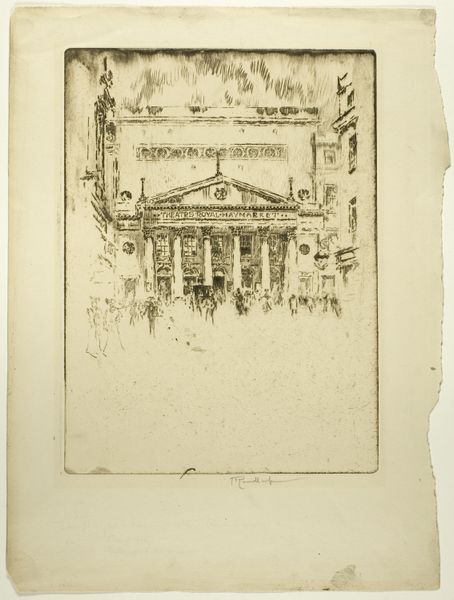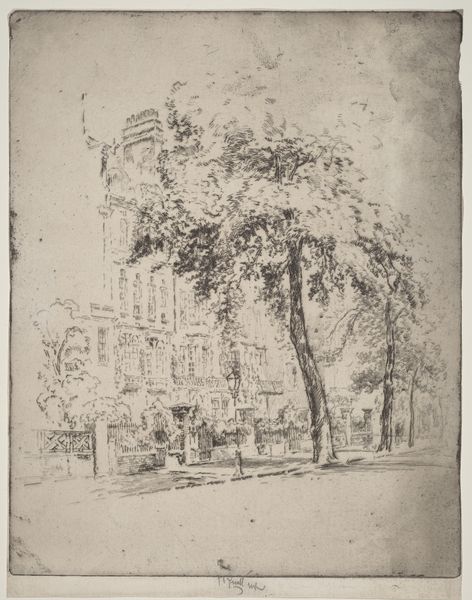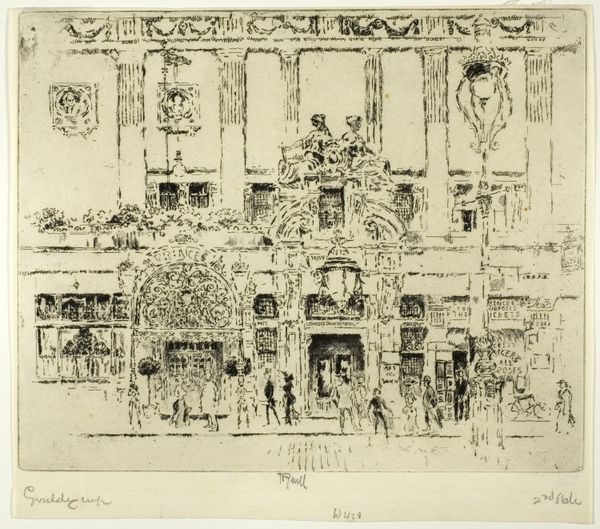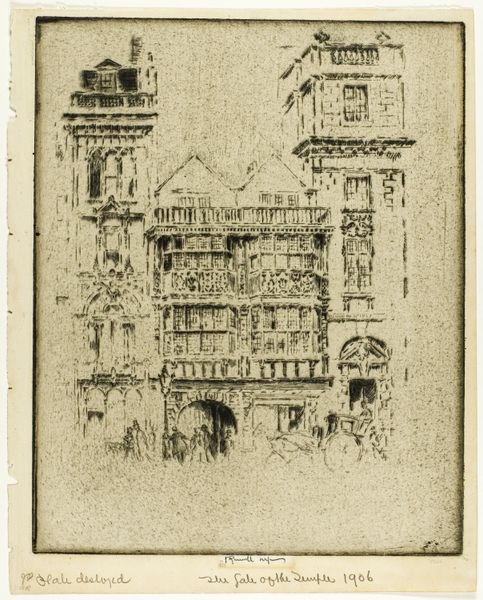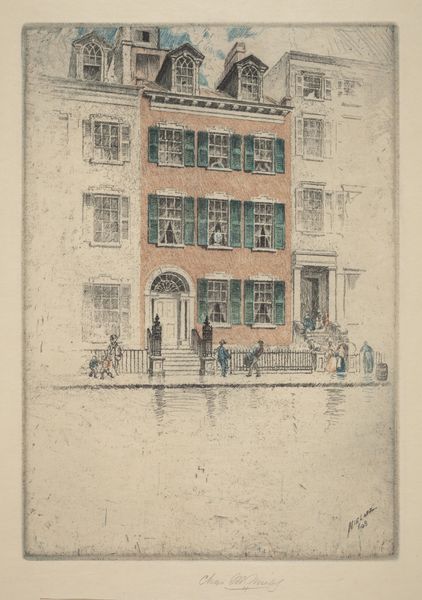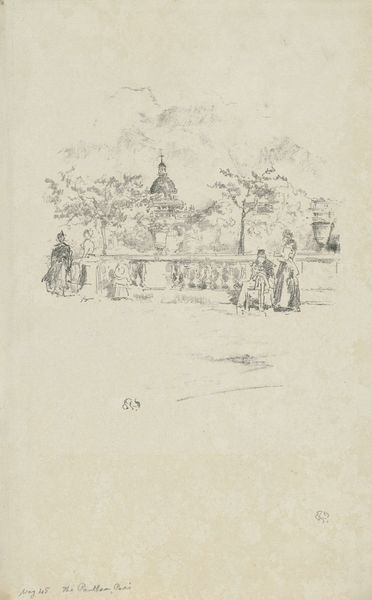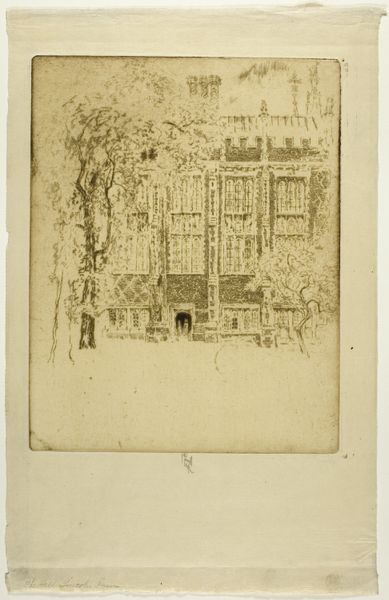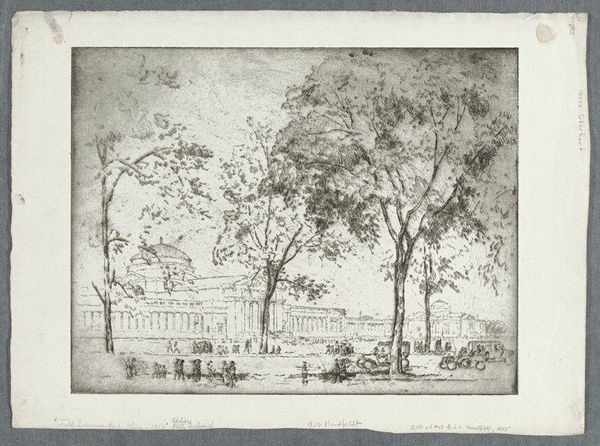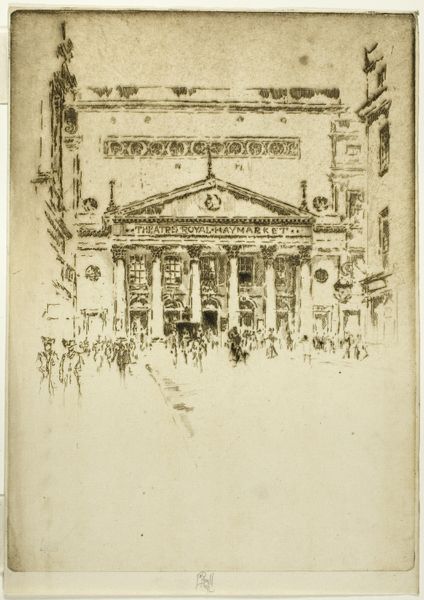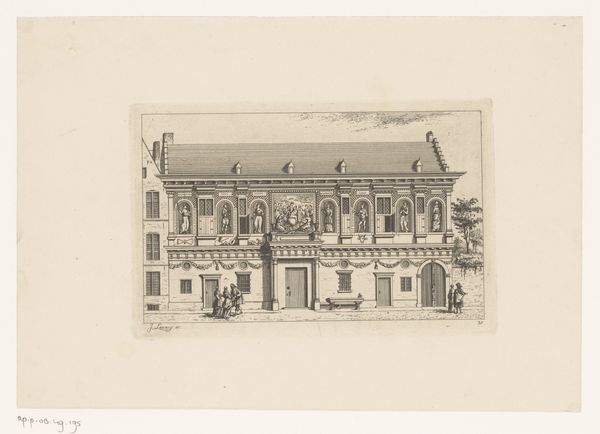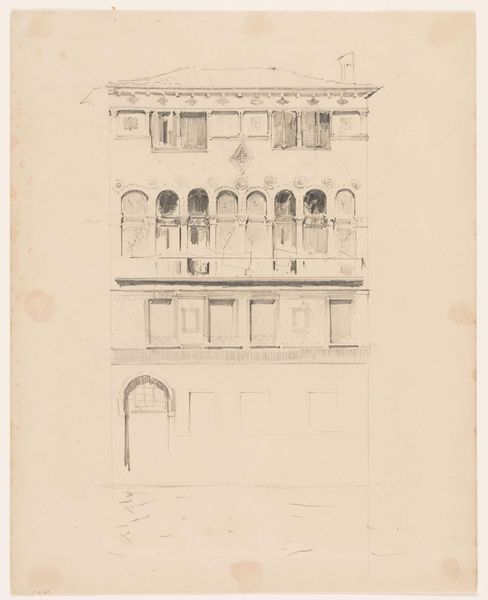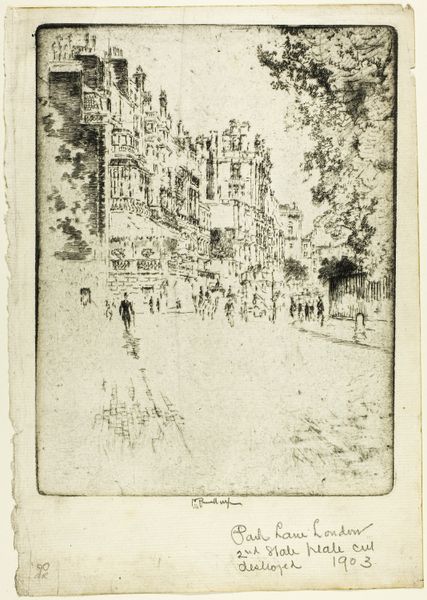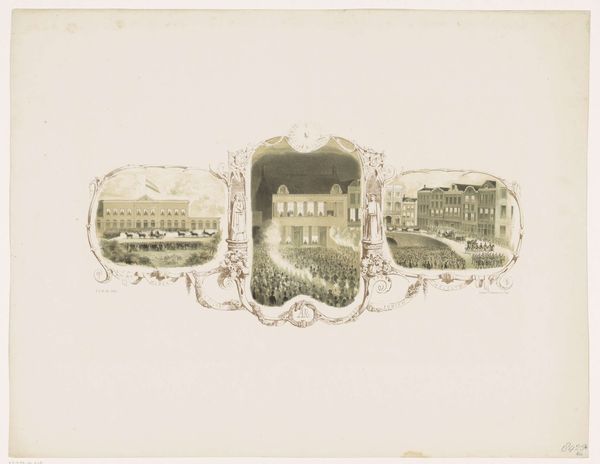
Dimensions: 275 × 217 mm (image); 288 × 220 mm (sheet)
Copyright: Public Domain
Editor: This is Joseph Pennell’s "The Garrick Theatre," created in 1903 using etching on paper. It's so delicate. You can almost hear the hustle and bustle of the city captured in these fine lines. What draws your attention to this piece? Curator: I'm immediately interested in the labor and materials involved. Etching itself is an intricate process, isn't it? The way Pennell manipulates the copper plate, the acid, the ink – each step leaves a trace of its own history on the final print. How does this emphasis on process change our understanding of the theatre itself as a site of production? Editor: That's a perspective I hadn't considered. I was focused on the impressionistic style and the sense of place. Curator: But even the choice of subject, a theatre, a place of mass entertainment... How does that fit into a broader understanding of leisure and consumption at the turn of the century? Were these images, reproduced and sold, simply documenting society or actively shaping it? Also, consider how modern techniques such as steel-frame construction impacted the theaters appearance. Editor: So, it’s not just about aesthetics, but also about the economics and social implications of art production. Do you think that the relatively accessible nature of printmaking, compared to painting, democratized art in any way? Curator: Potentially, yes. It allowed for wider dissemination of images and ideas. However, we should also consider who had access to the means of producing and consuming these prints. What were the material conditions that shaped Pennell's practice and the reception of his work? Was he just reproducing architectural detail? What does this image *do*? Editor: This has completely changed how I see the image! Thank you for showing me how to look beyond just the surface impression and to consider the broader material and social context. Curator: Likewise! It is always refreshing to think about how the intersection of process and social context impacts our perception of everyday life captured in art.
Comments
No comments
Be the first to comment and join the conversation on the ultimate creative platform.
